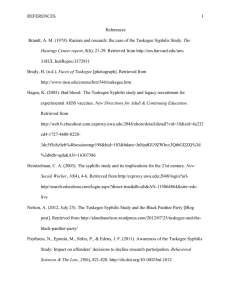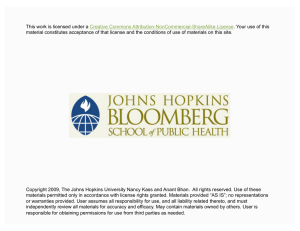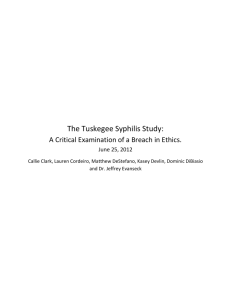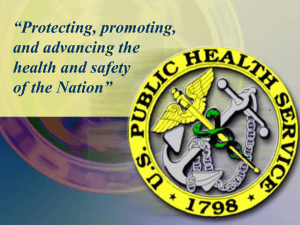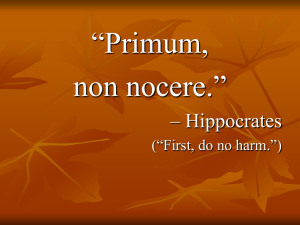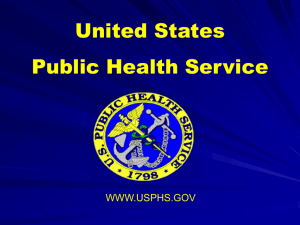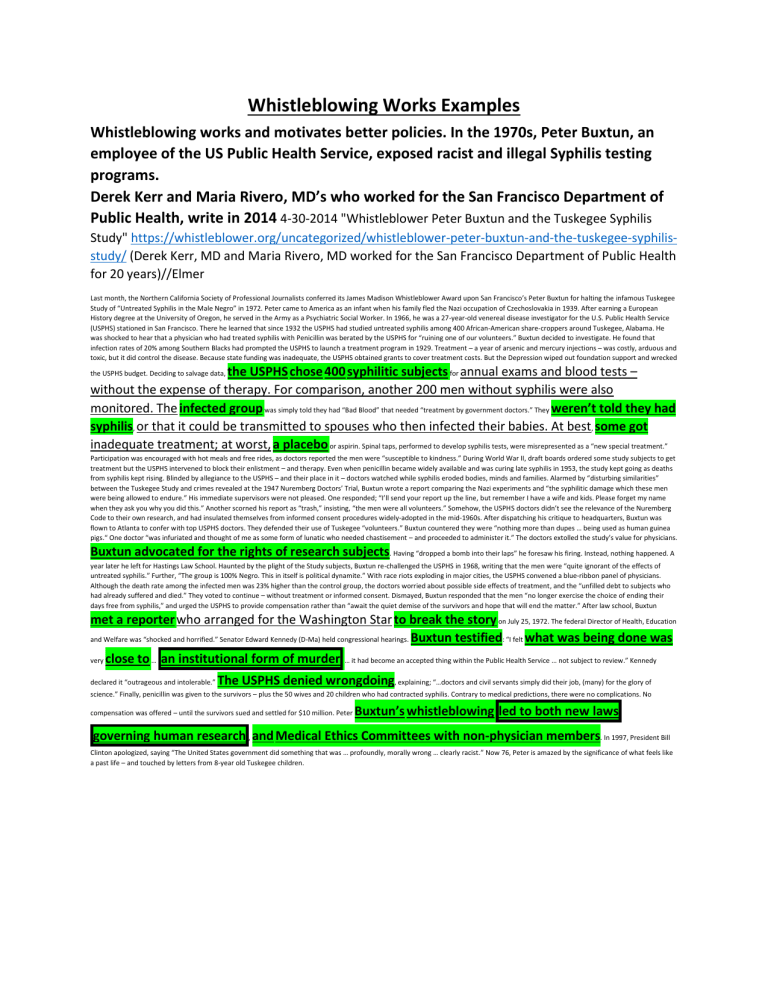
Whistleblowing Works Examples Whistleblowing works and motivates better policies. In the 1970s, Peter Buxtun, an employee of the US Public Health Service, exposed racist and illegal Syphilis testing programs. Derek Kerr and Maria Rivero, MD’s who worked for the San Francisco Department of Public Health, write in 2014 4-30-2014 "Whistleblower Peter Buxtun and the Tuskegee Syphilis Study" https://whistleblower.org/uncategorized/whistleblower-peter-buxtun-and-the-tuskegee-syphilisstudy/ (Derek Kerr, MD and Maria Rivero, MD worked for the San Francisco Department of Public Health for 20 years)//Elmer Last month, the Northern California Society of Professional Journalists conferred its James Madison Whistleblower Award upon San Francisco’s Peter Buxtun for halting the infamous Tuskegee Study of “Untreated Syphilis in the Male Negro” in 1972. Peter came to America as an infant when his family fled the Nazi occupation of Czechoslovakia in 1939. After earning a European History degree at the University of Oregon, he served in the Army as a Psychiatric Social Worker. In 1966, he was a 27-year-old venereal disease investigator for the U.S. Public Health Service (USPHS) stationed in San Francisco. There he learned that since 1932 the USPHS had studied untreated syphilis among 400 African-American share-croppers around Tuskegee, Alabama. He was shocked to hear that a physician who had treated syphilis with Penicillin was berated by the USPHS for “ruining one of our volunteers.” Buxtun decided to investigate. He found that infection rates of 20% among Southern Blacks had prompted the USPHS to launch a treatment program in 1929. Treatment – a year of arsenic and mercury injections – was costly, arduous and toxic, but it did control the disease. Because state funding was inadequate, the USPHS obtained grants to cover treatment costs. But the Depression wiped out foundation support and wrecked the USPHS chose 400 syphilitic subjects for annual exams and blood tests – without the expense of therapy. For comparison, another 200 men without syphilis were also monitored. The infected group was simply told they had “Bad Blood” that needed “treatment by government doctors.” They weren’t told they had syphilis, or that it could be transmitted to spouses who then infected their babies. At best, some got inadequate treatment; at worst, a placebo or aspirin. Spinal taps, performed to develop syphilis tests, were misrepresented as a “new special treatment.” the USPHS budget. Deciding to salvage data, Participation was encouraged with hot meals and free rides, as doctors reported the men were “susceptible to kindness.” During World War II, draft boards ordered some study subjects to get treatment but the USPHS intervened to block their enlistment – and therapy. Even when penicillin became widely available and was curing late syphilis in 1953, the study kept going as deaths from syphilis kept rising. Blinded by allegiance to the USPHS – and their place in it – doctors watched while syphilis eroded bodies, minds and families. Alarmed by “disturbing similarities” between the Tuskegee Study and crimes revealed at the 1947 Nuremberg Doctors’ Trial, Buxtun wrote a report comparing the Nazi experiments and “the syphilitic damage which these men were being allowed to endure.” His immediate supervisors were not pleased. One responded; “I’ll send your report up the line, but remember I have a wife and kids. Please forget my name when they ask you why you did this.” Another scorned his report as “trash,” insisting, “the men were all volunteers.” Somehow, the USPHS doctors didn’t see the relevance of the Nuremberg Code to their own research, and had insulated themselves from informed consent procedures widely-adopted in the mid-1960s. After dispatching his critique to headquarters, Buxtun was flown to Atlanta to confer with top USPHS doctors. They defended their use of Tuskegee “volunteers.” Buxtun countered they were “nothing more than dupes … being used as human guinea pigs.“ One doctor “was infuriated and thought of me as some form of lunatic who needed chastisement – and proceeded to administer it.” The doctors extolled the study’s value for physicians. Buxtun advocated for the rights of research subjects. Having “dropped a bomb into their laps” he foresaw his firing. Instead, nothing happened. A year later he left for Hastings Law School. Haunted by the plight of the Study subjects, Buxtun re-challenged the USPHS in 1968, writing that the men were “quite ignorant of the effects of untreated syphilis.” Further, “The group is 100% Negro. This in itself is political dynamite.” With race riots exploding in major cities, the USPHS convened a blue-ribbon panel of physicians. Although the death rate among the infected men was 23% higher than the control group, the doctors worried about possible side effects of treatment, and the “unfilled debt to subjects who had already suffered and died.” They voted to continue – without treatment or informed consent. Dismayed, Buxtun responded that the men “no longer exercise the choice of ending their days free from syphilis,” and urged the USPHS to provide compensation rather than “await the quiet demise of the survivors and hope that will end the matter.” After law school, Buxtun met a reporter who arranged for the Washington Star to break the story on July 25, 1972. The federal Director of Health, Education and Welfare was “shocked and horrified.” Senator Edward Kennedy (D-Ma) held congressional hearings. Buxtun testified: “I felt what was being done was very close to … an institutional form of murder declared it “outrageous and intolerable.” … it had become an accepted thing within the Public Health Service … not subject to review.” Kennedy The USPHS denied wrongdoing, explaining; “…doctors and civil servants simply did their job, (many) for the glory of science.” Finally, penicillin was given to the survivors – plus the 50 wives and 20 children who had contracted syphilis. Contrary to medical predictions, there were no complications. No compensation was offered – until the survivors sued and settled for $10 million. Peter Buxtun’s whistleblowing led to both new laws governing human research , and Medical Ethics Committees with non-physician members. In 1997, President Bill Clinton apologized, saying “The United States government did something that was … profoundly, morally wrong … clearly racist.” Now 76, Peter is amazed by the significance of what feels like a past life – and touched by letters from 8-year old Tuskegee children.
